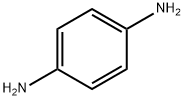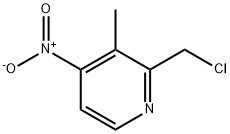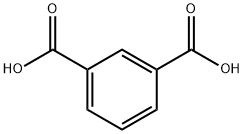m-Phenylenediamine
Synonym(s):1,3-Benzenediamine;1,3-Diaminobenzene;1,3-Phenylenediamine;MPDA
- CAS NO.:108-45-2
- Empirical Formula: C6H8N2
- Molecular Weight: 108.14
- MDL number: MFCD00007799
- EINECS: 203-584-7
- SAFETY DATA SHEET (SDS)
- Update Date: 2025-01-27 09:38:02

What is m-Phenylenediamine?
Chemical properties
Grey crystal granule
Chemical properties
m-Phenylenediamine is a colorless to white crystalline substance that turns red upon exposure to air
The Uses of m-Phenylenediamine
The appearance of the high purity of the m-phenylenediamine is snow white flake solid used as a synthetic electronic grade polyimide material and epoxy resin curing agent.
The Uses of m-Phenylenediamine
1,3-Phenylenediamine is used in the foaming-type hair dye composition.
The Uses of m-Phenylenediamine
m-Phenylenediamine is used in the foaming-type hair dye composition. It is used as a synthetic electronic grade polyimide material and epoxy resin curing agent. It is used also block polymers, textile fibers, urethanes, petroleum additives, rubber chemicals, in corrosion inhibitors, in photography, as reagent for gold & bromine.
Definition
ChEBI: 1,3-phenylenediamine is a phenylenediamine taht is benzene substituted at positions 1 and 3 with amino functions.
Synthesis Reference(s)
Journal of the American Chemical Society, 102, p. 6182, 1980 DOI: 10.1021/ja00539a054
The Journal of Organic Chemistry, 37, p. 930, 1972 DOI: 10.1021/jo00972a002
General Description
Colorless or white colored needles that turn red or purple in air. Melting point 64-66 C. Density 1.14 g / cm3. Flash point 280 F. May irritate skin and eyes. Toxic by skin absorption, inhalation or ingestion. Used in aramid fiber manufacture, as a polymer additive, dye manufacturing, as a laboratory reagent, and in photography.
Air & Water Reactions
Soluble in water [Merck].
Reactivity Profile
m-Phenylenediamine an aromatic amine, neutralizes acids, acid chlorides, acid anhydrides and chloroformates in exothermic reactions to form salts. May be incompatible with isocyanates, halogenated organics, peroxides, phenols (acidic), epoxides, anhydrides, and acid halides. Incompatible with oxidizing agents .
Fire Hazard
m-Phenylenediamine is combustible. Dust may form explosive mixtures in air
Flammability and Explosibility
Non flammable
Safety Profile
Suspected carcinogen with experimental tumorigenic and teratogenic data. Poison by ingestion, intravenous, subcutaneous, and intraperitoneal routes. Mildly toxic by skin contact. Mutation data reported. Combustible when exposed to heat or flame. A hair dye ingredtent. When heated to decomposition it emits toxic fumes of NOx. See also other phenylenediamine entries and AMINES.
Potential Exposure
Used in making various dyes; as a curing agent for epoxy resin; rubber, textile fibers; urethanes, corrosion inhibitors; adhesives; in photographic and analytical procedures and processes.
Carcinogenicity
"Occupational exposure to m-PDA may occur through inhalation and dermal contact with this compound at workplace where m-PDA is produced or used. The general population may be exposed to m-PDA via dermal contact with consumer products containing this compound."An IARC Working Group concluded, on the basis of lack of human data and inadequate animal data, that m-PDA was not classifiable (Group 3) as to its carcinogenicity to humans.
Metabolic pathway
By the perfused rat liver, 1,3-diaminobenzene (MPD) is metabolized to three identified N-acetylated derivatives N-acetyl-1,3-diaminobenzene, N,N'- diacetyl-1,3-diaminobenzene, and N,N'-diacetyl-2,4- diaminophenol which are identical to the metabolites excreted in rat urine.
Shipping
UN1673 Phenylenediamines (o-, m-, p-), Hazard Class: 6.1; Labels: 6.1-Poisonous materials.
Purification Methods
Purify the diamine by distillation under a vacuum followed by recrystallisation from EtOH (rhombs) and if necessary redistillation. It should be protected from light; otherwise it darkens rapidly. [Neilson et al. J Chem Soc 371 1962, IR: Katritzky & Jones J Chem Soc 3674, 2058 1959, UV: Forbes & Leckie Can J Chem 36 1371 1958.] The hydrochloride has m 277-278o, and the bis-4-chlorobenzenesulfonyl derivative has m 220-221o from H2O (214-215o, from MeOH/H2O) [Runge & Pfeiffer Chem Ber 90 1737 1957]. The acetate has m 191o. [Beilstein 13 IV 79.]
Incompatibilities
Dust may form explosive mixture with air. Incompatible with oxidizers (chlorates, nitrates, peroxides, permanganates, perchlorates, chlorine, bromine, fluorine, etc.); contact may cause fires or explosions. Keep away from alkaline materials, strong bases, strong acids, oxoacids, epoxides, acid chlorides; acid anhydrides; chloroformates. Heat and light contribute to instability. Keep away from metals.
Waste Disposal
Controlled incineration whereby oxides of nitrogen are removed from the effluent gas by scrubber, catalytic or thermal device.
Properties of m-Phenylenediamine
| Melting point: | 64-66 °C |
| Boiling point: | 282-284 °C |
| Density | 1,139 g/cm3 |
| vapor density | 3.7 (vs air) |
| vapor pressure | 0.62 mm Hg ( 100 °C) |
| refractive index | 1.6339 |
| Flash point: | >230 °F |
| storage temp. | Store below +30°C. |
| solubility | 350g/l |
| form | pellets |
| pka | 5.11, 2.50(at 20℃) |
| color | Yellow to light tan or brown gray |
| PH | 8 (100g/l, H2O, 20℃) |
| Water Solubility | 350 g/L (25 ºC) |
| Sensitive | Air Sensitive |
| Merck | 14,7283 |
| BRN | 471357 |
| Exposure limits | ACGIH: TWA 0.1 mg/m3 |
| Stability: | AIR SENSITIVE |
| CAS DataBase Reference | 108-45-2(CAS DataBase Reference) |
| NIST Chemistry Reference | 1,3-Benzenediamine(108-45-2) |
| IARC | 3 (Vol. 16, Sup 7) 1987 |
| EPA Substance Registry System | 1,3-Phenylenediamine (108-45-2) |
Safety information for m-Phenylenediamine
| Signal word | Danger |
| Pictogram(s) |
 Skull and Crossbones Acute Toxicity GHS06  Health Hazard GHS08  Environment GHS09 |
| GHS Hazard Statements |
H317:Sensitisation, Skin H319:Serious eye damage/eye irritation H341:Germ cell mutagenicity H410:Hazardous to the aquatic environment, long-term hazard |
| Precautionary Statement Codes |
P273:Avoid release to the environment. P280:Wear protective gloves/protective clothing/eye protection/face protection. P301+P310:IF SWALLOWED: Immediately call a POISON CENTER or doctor/physician. P305+P351+P338:IF IN EYES: Rinse cautiously with water for several minutes. Remove contact lenses, if present and easy to do. Continuerinsing. |
Computed Descriptors for m-Phenylenediamine
| InChIKey | WZCQRUWWHSTZEM-UHFFFAOYSA-N |
m-Phenylenediamine manufacturer
New Products
3-Iodophenylacetic acid 3-Pyridineacetonitrile, α-hydroxy- 2-Propanamine, 1-chloro-, hydrochloride (9CI) 3-(hexyloxy)-4-(pyridin-3-yl)-1,2,5-thiadiazole 2-Hexyn-1-ol Dibenzo-18-crown-6 Nickel(II) perchlorate hexahydrate, 98% 4-Bromophenylacetonitrile, 95% 3-Bromo-4-fluoroaniline, 97% Sodium tetraborate decahydrate, 98% Palladium(II) acetate, trimer, Pd 99% 4-Bromo-2-chlorotoluene, 97% N N Dimethylformamide Dimethyl Acetal (Dmf Dma) 2,3-Dichloro Benzoyl Cyanide [Side Chain] Bis(2-Chloroethyl) Amine Hydrochloride L-Glutamic Acid Diethyl Ester Hydrochloride 5-(Difluoromethoxy)-2-Mercaptobenzimidazole 1-Ethyl-3-(3-Dimethylaminopropyl)-Carbodiimide Hydrochloride [EDC Hcl] 1,4-Napthoquinone Bromoiodomethane Sodium Bicarbonate Methylene Dichloride (MDC) Ethyl Acetate Indole-3-Carbinol (I3C)Related products of tetrahydrofuran








You may like
-
 1,3-Phenylenediamine 98%View Details
1,3-Phenylenediamine 98%View Details -
 108-45-2 98%View Details
108-45-2 98%View Details
108-45-2 -
 Benzene-1,3-diamine 99% CAS 108-45-2View Details
Benzene-1,3-diamine 99% CAS 108-45-2View Details
108-45-2 -
 m-Phenylenediamine CAS 108-45-2View Details
m-Phenylenediamine CAS 108-45-2View Details
108-45-2 -
 1,3-Phenylenediamine CAS 108-45-2View Details
1,3-Phenylenediamine CAS 108-45-2View Details
108-45-2 -
 108-45-2 99%View Details
108-45-2 99%View Details
108-45-2 -
 m-PHENYLENEDIAMINE For Synthesis CAS 108-45-2View Details
m-PHENYLENEDIAMINE For Synthesis CAS 108-45-2View Details
108-45-2 -
 m-Phenylenediamine CAS 108-45-2View Details
m-Phenylenediamine CAS 108-45-2View Details
108-45-2
